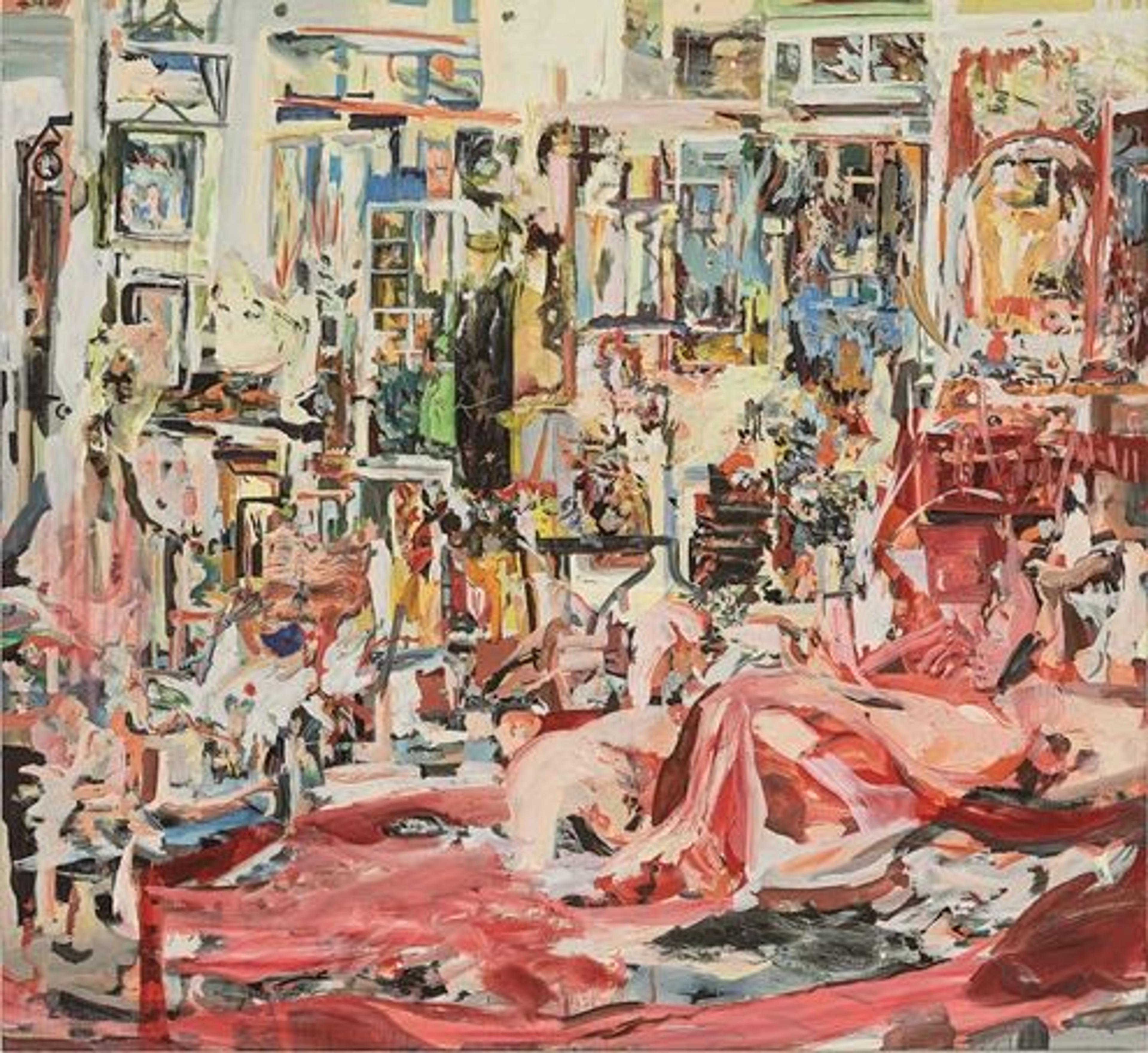
Exhibition Dates: April 4–December 3, 2023
Exhibition Location: The Met Fifth Avenue, Gallery 913
The Metropolitan Museum of Art presents Cecily Brown: Death and the Maid, the first full-breadth museum survey in New York of this internationally acclaimed artist. On view from April 4 to December 3, 2023, the exhibition highlights the significant contributions of this important New York–based painter over the course of 25 years of her career in the city she has called home for three decades. The show unites some 50 paintings, drawings, sketchbooks, and monotypes—many never before seen in New York and several recently completed—to focus on Brown’s enduring and intertwining themes of still life, memento mori, mirroring, and vanitas, symbolic depictions of human vanity or life’s brevity.
The exhibition is made possible by The Modern Circle and Agnes Gund.
Additional support is provided by Neuberger Berman Private Wealth, the Jeffrey and Leslie Fischer Family Foundation, and Barbara and John Vogelstein.
“Cecily Brown’s dynamic and provocative paintings have transfixed viewers for 25 years,” said Max Hollein, Marina Kellen Director of The Met. “Through the use of sumptuous color, bravura brushwork, and complex narratives that relate to some of Western art history’s age-old themes, Brown engages with both contemporary culture and time’s eternal passage, exploring themes of desire, power, and mortality. With works from across her career, the exhibition presents one of the most exhilarating artists of our time anew.”
Born in London in 1969, Brown graduated from the Slade School of Art in 1993 and moved to New York the following year. Works in her breakout exhibitions of the late 1990s captivated viewers with a sensibility that melded illustrated sources with provocative subject matter and vibrant color with a distinctive hand. She also worked to revive painting for a new generation alongside a handful of other artists—many of them also women—at the very moment critics were questioning its import and relevance as a means for artmaking.
The exhibition follows this trajectory along two distinct but interlocking themes. The first, vanity and vanitas, emerged as early as 1998 in her painting The Only Game in Town, which depicts the figure of a woman gazing at herself in a mirror. The subject’s grisly reflection captures a now longstanding thread in the work: that nothing may look quite as it seems, especially when seen through the looking glass. It also evokes a favorite double image source that is one among many in the artist’s repertoire, that of “the wife and the mother-in-law,” where the visages of a young maiden and an older woman are overlaid. Brown reprised the motif of the vanity in the mid- and late 2000s with a series of works that include Untitled (Vanity) (2005) and the leftmost panel of her triptych in The Met collection, Fair of Face, Full of Woe (2008). Alongside several related paintings, drawings, sketchbooks, and prints that will also be on display, these works are based on some of the artist’s favorite popular images from the turn of the last century, including American illustrator Charles Allan Gilbert’s 1892 double-image drawing All Is Vanity, in which the woman and her reflection merge to create the ghostly image of a skull. This is the memento mori that reminds the viewer that death is ever present and represents a counterpart to the subject’s vain preoccupation with her own image. For Brown, the double game that Gilbert’s visual pun describes also elaborates her most fundamental belief that painting and drawing can perform multiple duties simultaneously: be both representational and abstract, moralizing and sensuous, and referential and consistently innovative at the same time.
The second, related theme is that of the still life. The show includes works that represent cluttered interiors, rollicking picnic scenes, and sumptuous tabletops, all of which draw on Brown’s fascination with the potential for painting and drawing to display decadent plenitude with a heaping dose of mortality (and morality). Recent paintings such as Nature Morte and Lobsters, Oysters, Cherries and Pearls (both 2020) draw on the heavily abundant still lifes by Dutch and Flemish artists such as Frans Snyders. A number of earlier works, such as Hangover Square and Untitled (Chambre) (both 2005), center exquisitely cluttered interiors as spaces for discovery. And landmark paintings such as Memento Mori I (2006¬–8) revisit a childhood delight and terror in Shockheaded Peter’s Fidgety Philip, the boy who cannot sit still. Phil rocks in his dining chair until he loses balance, pulling the white tablecloth and everything on it down with him—a delirious fall that is the perfect subject for a number of Brown’s most tumultuous and extraordinary pictures.
Credits and Related Content
Cecily Brown: Death and the Maid is organized by Ian Alteveer, Aaron I. Fleischman Curator in The Met’s Department of Modern and Contemporary Art, in close collaboration with the artist.
The exhibition is accompanied by a scholarly publication distributed by Yale University Press. With a new conversation with the artist by Adam Eaker, Associate Curator of European Paintings at The Met, and an essay by Alteveer, the catalogue aims to provide an entirely new and deeply thoughtful context for Brown.
The catalogue is made possible by The Modern Circle.
Additional support is provided by the Forman Family Foundation, Liza Mauer and Andrew Sheiner, Paula Cooper Gallery, and Thomas Dane Gallery.
Related programming includes gallery talks, several Access events, and studio workshops for teens and adults. On April 28, The Met will present “An Evening with Cecily Brown” in which the artist and Adam Eaker, Associate Curator, European Paintings will be in conversation about Brown's engagement with art history, influences from The Met’s collection, and her own singular artistic practice. Programming details will be available on The Met website.
The exhibition is featured on the Museum's website, as well as on social media using the hashtag #DeathAndTheMaid.
###
March 30, 2023
Contact: Alexandra Kozlakowski
Communications@metmuseum.org
Image: Cecily Brown (British, 1969). Selfie, 2020. Oil on linen, 43 × 47 in. (109.2 × 119.4 cm). The Swartz Family Collection © Cecily Brown